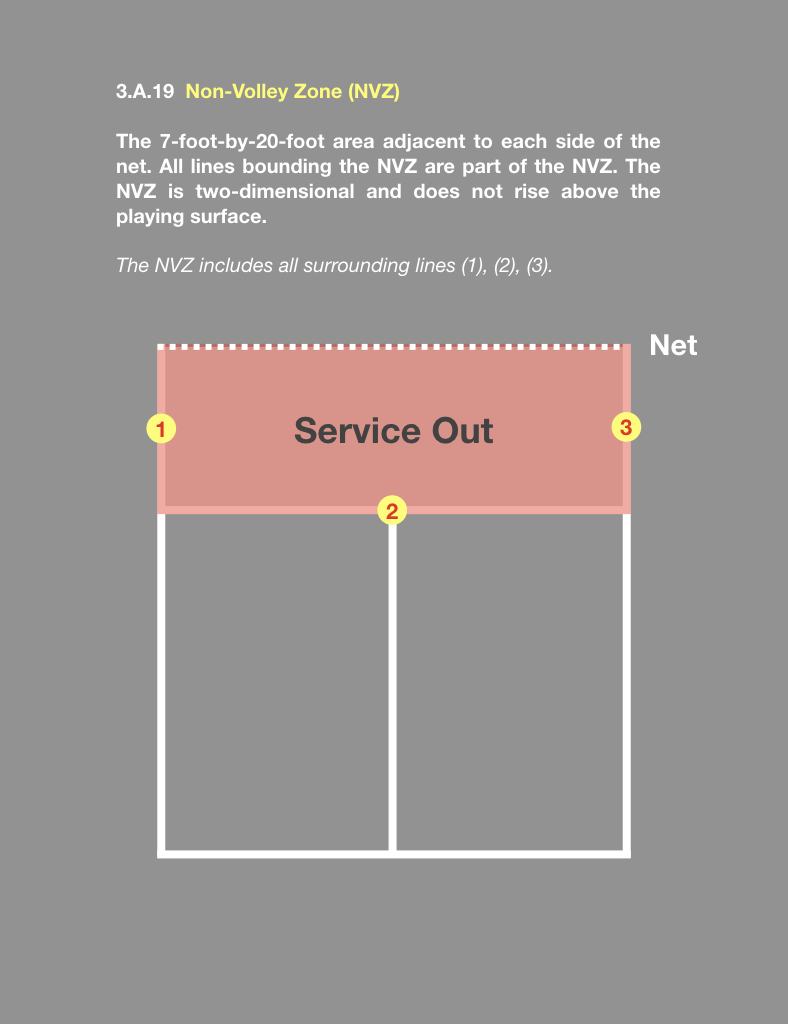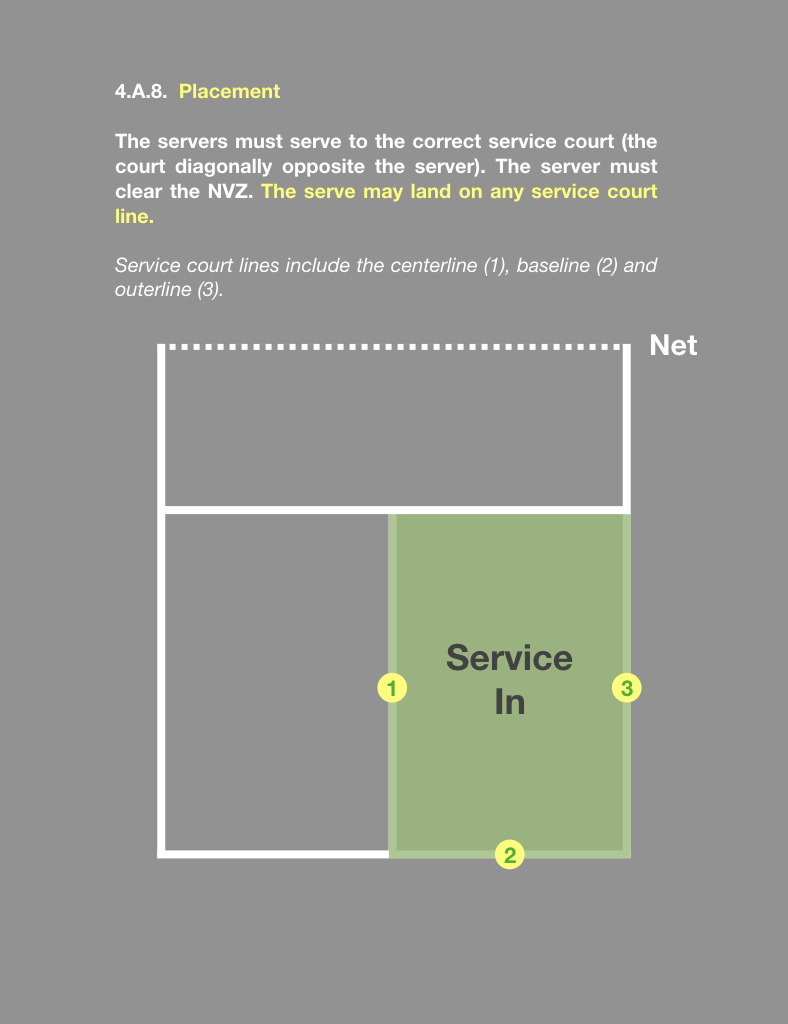Pickleball Rules
(simplified)
GeneralPickleball may be played by two players (singles), or four players (doubles), in Mens, Women's and Mixed formats.
The same playing area and rules apply to both singles and doubles, for all formats. The most popular format is doubles... Mens doubles, Womens doubles or Mixed doubles. |
ServeServes are initiated from behind the baseline, and made underhanded to the opposite receiving court.
Serves landing short (in the kitchen) or long (past the baseline) are considered faults. Only one serve is allowed. If the ball stakes the net and lands in the receiving court, it is a live ball and is no longer replayed. |
ScoringPoints are scored only by the serving team.
Games are normally played to 11 points, win by 2. Tournament games may be to 15 or 21, win by 2. When the serving team’s score is even the first server will be in the right-side court when serving or receiving; and the odd the player will be in the left-side court when serving or receiving. |
Non-Volley ZoneThe non-volley zone or "kitchen" is an area within seven feet either side of the net. It is marked by a line on the front edge of the service court.
Players may enter the kitchen anytime, but can only return a ball from the kitchen AFTER it bounces in the kitchen. It is a fault, if the attacking player steps in the kitchen, or on a kitchen line, or their momentum carries them into the kitchen after a volley (shot returned from the air). |
Double BounceWhen a ball is served the receiving team must let it bounce before returning it, and the serving team must let it bounce a second time before making the third shot.
Once the ball has bounced once in each teams court, both team may either volley the ball (hit it in the air), or play it off a bounce (ground stroke). The double bounce rule extends rallies. |
Sequence of PlayIn doubles, both players serve until their team commits a fault. After each point, the server switches court and serves again.
After the first fault, the second player serves. After the second fault, service goes to the other team (or side out). The opposing team then repeats the process. First serve until fault, then second serve until fault, then side out. |
Line CallsA ball contacting any line, except the non-volley zone line on a serve, is considered “in.”
A serve contacting the non-volley zone line is short and a fault. Line calls are made by the team or player, who is on the side of the court where the ball in question lands. |
First ServicePlayers use any fair method to determine who will serve first.
The winner has the option to choose side, or to serve or receive. In recreational play local players or clubs often designate a particular end of the court (e.g., north side) as the side to serve first. |
FaultsA fault is any action that stops play because of a rule violation.
A fault by the receiving team results in a point for the serving team. A fault by the serving team results in the server’s loss of serve and side out if second server. Some of the more common faults are listed below: |
Service Areas Explained
Many new players are unsure about the service area boundaries. Rule 3.A.19, explains the NVZ, and 4.A.8. clarifies the serve may land on "any service court line". These rules and corresponding boundaries are clearly illustrated below.
A fault occurs when:
- The ball is hit into the net or out of bounds
- A serve does not land within the confines of the receiving court
- The ball is volleyed before a bounce has occurred on each side after the serve
- A ball is volleyed from within the non-volley zone
- A ball bounces twice before being struck by the receiver
- A player, player’s clothing, or any part of a player’s paddle touches the net or the net post when the ball is in play
- There is a violation of a service rule
- A ball in play strikes a player or anything the player is wearing or carrying
- A ball in play strikes any permanent object before bouncing on the court
- The server serves before the referee calls the score in an officiated match
|
Facebook:
|
Email:
|
Mobile:
|
Privacy:
|
Media Kit:
|



